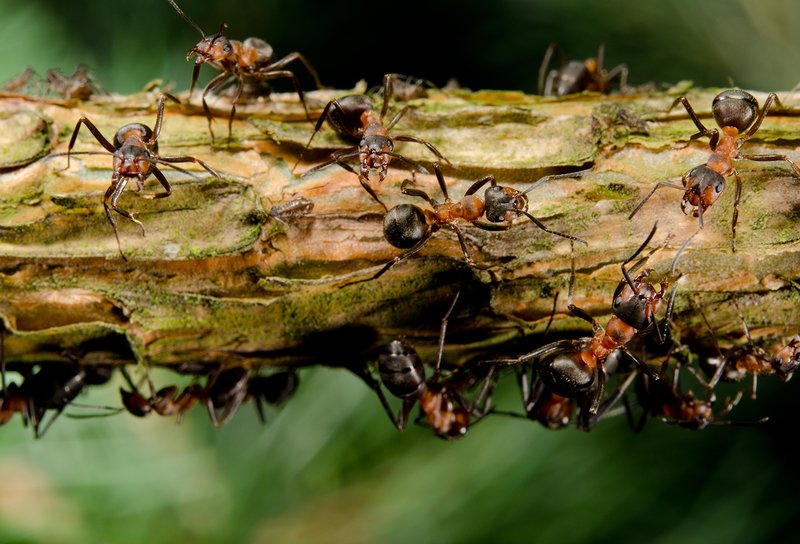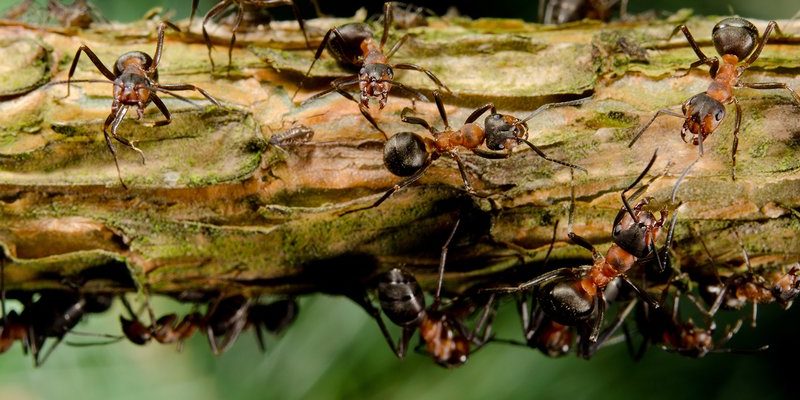
Imagine a carpenter ant, bustling around a decaying tree, turning it into a cozy nest. Now picture that tree struggling to survive due to rising temperatures and changing precipitation patterns. It’s like a delicate dance—when the music changes, sometimes the dancers can’t keep up. Let’s dive deeper into how climate change affects these tiny powerhouses, their environment, and ultimately, our ecosystems.
Understanding Carpenter Ants: Their Role and Habitat
Carpenter ants are fascinating creatures. They belong to the genus *Camponotus* and are known for their ability to excavate wood to create their nests. Unlike termites, which consume wood, carpenter ants simply tunnel through it, creating intricate networks of galleries. This behavior is beneficial because it helps decompose dead trees and return nutrients to the soil.
Typically, carpenter ants prefer moist, decaying wood, often found in old trees or even wooden structures. These environments provide shelter and a steady food supply, which is crucial for their survival. The colonies can range from a few dozen to thousands of ants, all working together to maintain their home. So, when we talk about climate change, we have to consider how these shifts in weather patterns impact their habitat.
You might be wondering, “What does climate change have to do with carpenter ants?” Well, changes in temperature and precipitation can alter the wood quality in their habitats. Warmer temperatures might cause trees to decay more rapidly or become less nutritious, ultimately affecting the ants’ ability to thrive.
Temperature Changes and Carpenter Ant Behavior
One of the most significant impacts of climate change is the increase in global temperatures. For carpenter ants, this poses both challenges and opportunities. Warmer temperatures can lead to longer foraging seasons, which might sound beneficial. However, it also puts pressure on their colonies to adapt quickly.
You see, carpenter ants rely on specific temperature ranges for their nesting and foraging activities. If temperatures swing wildly, it can disrupt their natural rhythms. For example, if a colony emerges too early in spring, they may find that food sources are still scarce. As a result, they might struggle to feed their young, leading to weaker colonies.
Additionally, higher temperatures can increase the likelihood of diseases and parasites that affect ants. Just like we’re more prone to certain illnesses during extreme weather, carpenter ants face similar risks. Warmer weather can create an environment conducive to pathogens, threatening their survival.
Shifts in Precipitation Patterns and Nesting Sites
Precipitation, or how much rain falls in a given area, also plays a crucial role in carpenter ant life. Climate change can lead to unpredictable weather patterns—think heavy rains followed by long dry spells. This inconsistency can drastically affect the wood they nest in and the availability of moisture that they require.
For example, if heavy rains lead to flooding, it might wash away nests or weaken the structural integrity of the wood. On the flip side, prolonged dry weather can lead to the dying of trees, which means fewer nesting sites for carpenter ants. Imagine having to move your home every few months because your neighborhood just isn’t what it used to be. That’s the harsh reality for these industrious ants.
Moreover, changes in water availability can also affect the food sources nearby. Carpenter ants are omnivores and consume a variety of foods, including honeydew from aphids. If climate change affects the populations of these other insects, it can create a ripple effect that impacts the carpenter ants’ survival.
Carpenter Ants and their Ecosystem: A Delicate Balance
Carpenter ants aren’t just solitary workers; they play a vital role in their ecosystem. As they excavate wood, they are helping to decompose dead trees, returning nutrients to the soil. This process fosters the growth of new plants, which provides food and shelter for a variety of other creatures.
However, if climate change disrupts this process, the entire ecosystem can suffer. For example, if carpenter ants cannot thrive due to changes in their habitats, the decay of trees will slow down. This slowdown could affect plants that rely on the nutrients released during decomposition, ultimately impacting everything from soil health to the local food chain.
Honestly, the loss of carpenter ants may not seem like a big deal at first glance, but when you consider their role in recycling nutrients and their interactions with other species, it becomes clear that they’re essential for maintaining ecological balance.
Adapting to Climate Change: What Lies Ahead for Carpenter Ants?
You might be asking, “Can carpenter ants adapt to climate change?” The answer is a bit complicated. While some populations may exhibit resilience or adaptability to changing conditions, many might struggle to keep up with the pace of these changes.
One important factor to consider is the genetic diversity within ant colonies. Populations with greater genetic diversity have a better chance of adapting to new challenges. If changing climate conditions lead to habitat fragmentation, however, it can reduce gene flow between populations and limit their ability to adapt.
As we move forward, scientists are studying how these tiny architects respond to environmental shifts. Understanding their adaptations may help us develop strategies to preserve their populations and, by extension, the ecosystems they support.
The impact of climate change on carpenter ants is a reminder of how interconnected our ecosystems truly are. As we change the climate, we also alter the tiny worlds within it. While carpenter ants might seem small and insignificant, their role as decomposers and their intricate social structures remind us of nature’s complexity.
As we continue to see shifts in temperature and precipitation patterns, it’s crucial to keep an eye on how these changes affect not just carpenter ants, but all species that share their environment. Protecting these tiny workers is more than just about saving one species—it’s about preserving the delicate balance of life that depends on them.
So, the next time you spot a carpenter ant busily working away, remember that they’re not just making a nest; they’re part of a much larger story about our planet’s future. It’s a reminder to cherish and protect the natural world around us, because every species matters—whether they’re big or small.

